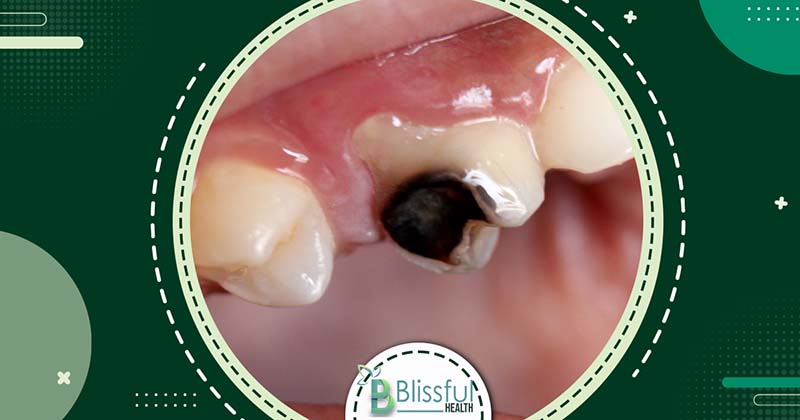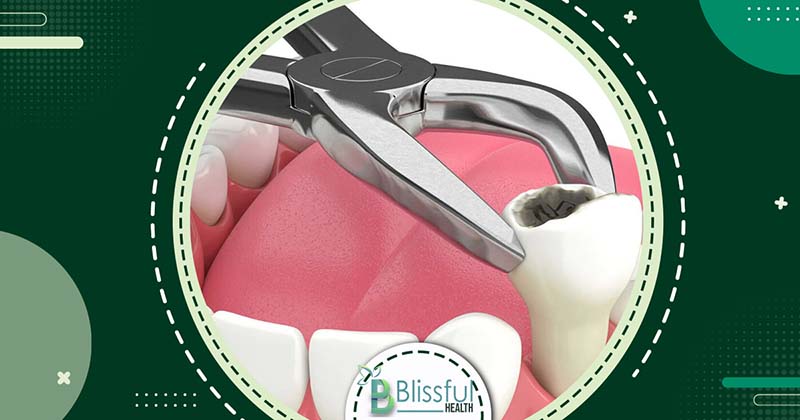Tooth Decay Treatment is essential to combat the gradual erosion of enamel, which, without intervention, leads to cavities and a host of dental problems. This article explores the causes, symptoms, and effective treatment options to halt tooth decay’s progress and protect your oral health. Join us in uncovering ways to maintain a healthier smile.
The Fundamentals of Tooth Decay
Tooth decay, also referred to as dental caries or cavities, is a dental ailment characterized by the deterioration of tooth enamel. As this erosion progresses, it paves the way for the formation of cavities.
According to the American Dental Association (ADA), a tooth is made up of three distinct layers:
- Enamel: This outermost layer serves as a robust shield, safeguarding the inner components of the tooth. Remarkably, enamel harbors no living cells and ranks as the toughest substance in the human body.
- Dentin: Positioned beneath the enamel, dentin constitutes the tooth’s second layer. When enamel sustains damage, it can expose the dentin. Within the dentin lie minute channels through which sensations like hot and cold can reach the tooth’s nerves. Consequently, such stimulation may induce discomfort and sensitivity.
- Pulp: Nestled at the core of the tooth, the pulp hosts a network of blood vessels, nerves, and connective tissue.
Tooth decay manifests in varying degrees of severity, ranging from mere enamel erosion to the formation of excruciating abscesses deep within the tooth’s pulp.

Root Causes of Tooth Decay
Tooth decay isn’t discriminatory—it can manifest on any surface of the tooth, including the root. Understanding its underlying causes is pivotal. Here’s a breakdown:
High Sugar Consumption
Indulging in a diet rich in sugary, starchy fare and acidic beverages can fuel tooth decay. Every time you snack on sweets or sip on sugary drinks, you provide oral bacteria with ample fuel to produce acids, which then launch an assault on your tooth enamel. Continuous consumption of acidic beverages, like soda, subjects your teeth to a persistent acid onslaught.

Late-Night Snacking
Late-night nibbling might seem harmless, but it can exacerbate tooth decay. Factors such as heightened sugar exposure, diminished saliva production during sleep, subpar oral hygiene practices, and even acid reflux contribute to this risk. The combination of these elements creates an unfavorable environment for your dental health, fostering decay.

Poor Oral Hygiene
Neglecting oral hygiene is the leading cause of tooth decay. Inadequate brushing and flossing habits pave the way for plaque accumulation. When teeth aren’t promptly cleaned after meals, plaque swiftly forms, laying the groundwork for the onset of decay and gingivitis.
Notes:
Opt for tooth-friendly snacks such as fruits, vegetables, and nuts to satisfy cravings without compromising dental health.
Drink acidic beverages through a straw to minimize direct contact with tooth surfaces.
Establish a nighttime oral care routine to mitigate the effects of late-night snacking on dental health.
Recognizing Signs of Tooth Decay
Detecting tooth decay hinges on recognizing its array of symptoms, which may vary based on the extent and location of cavities. Here’s what to look out for:
- Toothache and Discomfort: As tooth decay advances, you may experience persistent toothaches or discomfort, signaling underlying dental issues.
- Tooth Sensitivity: Heightened sensitivity to hot, cold, or sweet stimuli can indicate enamel erosion and the onset of decay.
- Painful Eating or Drinking: From mild to sharp pains when consuming sweet, hot, or cold foods and beverages, discomfort while eating or drinking may suggest tooth decay.
- Visible Damage: Inspection of your teeth may reveal visible signs of decay, such as holes, pits, or irregularities on the tooth surface.
- Staining: Discoloration in the form of brown, black, or white spots on any tooth surface may indicate decay or enamel breakdown.
- Pain on Biting: Experiencing pain when biting down could signify underlying dental problems, including advanced stages of tooth decay.
Notes:
- Regular dental check-ups are essential for early detection of tooth decay, even in the absence of noticeable symptoms.
- Avoiding sugary and acidic foods and beverages can help reduce the risk of enamel erosion and subsequent decay.
- Over-the-counter desensitizing toothpaste may provide relief from tooth sensitivity associated with early-stage decay.
Preventative Measures for Tooth Decay
Tooth decay affects people of all ages and occurs when plaque, a sticky film of bacteria, erodes the enamel—the sturdy outer layer of your teeth. Left unchecked, this process can culminate in cavities, infections, and ultimately, tooth loss. Anyway, with diligent attention to oral hygiene and dietary choices, tooth decay is largely preventable.
Practices to Eschew
- Frequent Snacking on Sugary Foods and Beverages: Regular consumption of sugary snacks and drinks provides a steady stream of nourishment for oral bacteria, fostering the production of acids that corrode tooth enamel.
- Neglecting Oral Hygiene: Failure to adhere to daily brushing and flossing routines permits plaque to accumulate on teeth surfaces, heightening the risk of decay.
- Ignoring Fluoride: Steer clear of neglecting fluoride, be it in toothpaste, mouth rinses, or water. Fluoride plays a crucial role in remineralizing and fortifying tooth enamel, enhancing its resilience against decay.
- Dry Mouth: Saliva serves as a natural cleanser for teeth, neutralizing acids produced by bacteria. A dry mouth lacks this protective mechanism against decay, necessitating avoidance of conditions that diminish saliva production, such as certain medications or habitual mouth breathing.
- Using Teeth as Tools: Employing teeth for tasks like opening bottles or tearing through packaging can result in chips and cracks, providing breeding grounds for bacteria and fostering cavity formation.
Advocated Practices
- Regular Brushing and Flossing: Brushing teeth twice daily with fluoride toothpaste and daily flossing are indispensable for plaque removal and decay prevention.
- Utilization of Fluoride: Embrace fluoride toothpaste and consider drinking fluoridated water to bolster tooth enamel strength, rendering it more resilient to decay.
- Maintaining a Balanced Diet: Opt for low-sugar, nutrient-rich foods to shield your teeth from decay.
- Regular Dental Checkups: Scheduling dental cleanings and checkups at least biannually is paramount for preempting dental issues before they escalate.
- Sealants: Explore the option of dental sealants, which furnish a protective coating over the chewing surfaces of posterior teeth, thwarting decay in their crevices and fissures.
Notes:
- Chewing sugar-free gum can stimulate saliva production, aiding in tooth cleansing and decay prevention.
- Consider using a mouthguard if you engage in activities that pose a risk of dental injury, such as sports or teeth grinding during sleep.
- Be mindful of acidic foods and beverages, as they can erode tooth enamel and heighten susceptibility to decay.
Approaches to Tooth Decay Treatment
When grappling with tooth decay, seeking prompt treatment from a dentist is crucial, tailored to the severity of the condition. Here’s an overview of potential treatment approaches:
Fluoride Application in Early Stages
In the nascent stages of tooth decay, fluoride emerges as a stalwart ally. Whether sourced naturally from foods like tea and certain fish or supplemented in toothpaste, fluoride fortifies tooth enamel, rendering it more resistant to acid erosion. Additionally, fluoride impedes plaque formation and the production of bacterial acids. It can even facilitate the repair of damaged enamel. Application methods may include fluoride gels, varnishes, or pastes directly over affected teeth.
Filling Cavities
When cavities afflict the enamel without penetrating the tooth’s inner pulp, dental fillings come into play. These fillings, composed of materials like silver amalgam or tooth-colored composite, serve as substitutes for natural enamel. Sealed onto the tooth with dental cement, they restore its structural integrity. Inlays and onlays, crafted from durable metals such as gold, offer alternative solutions for cavity repair.
Installation of Artificial Tooth Crowns
For teeth riddled with cavities, artificial tooth crowns present a viable treatment avenue. This procedure involves removing decayed portions of the tooth and affixing a crown—shaped to match the original tooth—over the remaining structure. Crowns, fashioned from materials like porcelain, ceramic, gold, or glass, are securely bonded with dental cement, bolstering both function and aesthetics.
Root Canal Therapy
When tooth decay infiltrates the inner pulp, triggering intense pain, root canal treatment emerges as a last-ditch effort to salvage the tooth. This procedure entails excising the diseased pulp and substituting it with an artificial filler called gutta-percha. By eliminating the source of infection and discomfort, root canal therapy aims to preserve the tooth’s integrity.
Tooth Extraction
In cases of severe decay or damage, tooth extraction may be necessary to prevent complications such as the spread of decay. Following extraction, options such as partial dentures, dental bridges, or tooth implants may be explored to restore dental function and aesthetics.

Reconstruction Strategies Post-tooth Decay Treatment
Following tooth decay treatment, reconstruction strategies are pivotal for restoring the function, aesthetics, and longevity of affected teeth. The selection of a reconstruction method hinges on factors such as the extent of decay, the tooth’s post-treatment condition, and the patient’s overall oral health and preferences. Here’s a comprehensive overview of common reconstruction strategies employed post-tooth decay treatment:
- Dental Fillings: Dental fillings represent a ubiquitous option for minor to moderate tooth decay. Following decay removal, the cavity is filled with materials like composite resins, dental amalgam, gold, or porcelain. Composite resins are particularly favored for their ability to blend seamlessly with natural tooth color.
- Inlays and Onlays: Inlays and onlays come into play when decay exceeds the scope of a filling but falls short of necessitating a crown. Crafted in a dental lab, these restorations are cemented onto the tooth surface. Inlays fit within the tooth’s cusps, while onlays encompass one or more cusps. Materials include gold, porcelain, or composite substances.
- Dental Crowns: Extensively damaged teeth may necessitate dental crowns to restore form, strength, and aesthetics. Crowns encase the visible portion of the tooth above the gum line, crafted from materials like metal, porcelain fused to metal, all-ceramic, or all-resin.
- Dental Veneers: Veneers offer a viable solution for teeth afflicted by surface damage or aesthetic concerns post-decay treatment. These thin shells, made of porcelain or composite material, adhere to the front surface of teeth, enhancing their appearance.
- Root Canal Therapy: When decay penetrates the tooth’s pulp, root canal therapy becomes imperative prior to reconstruction. This process entails pulp removal, interior cleansing, and sealing. Subsequently, a crown is often affixed to fortify the tooth.
- Dental Implants: Tooth loss stemming from decay may necessitate dental implants for durable reconstruction. An implant, comprising a titanium post embedded into the jawbone, replaces the tooth root. A dental crown atop the implant mimics natural tooth appearance and function.
- Bridges: Dental bridges serve to replace one or more missing teeth. Comprising artificial teeth anchored by adjacent natural teeth or dental implants, bridges restore both function and aesthetics.
Through these reconstructive strategies, individuals can restore their dental health and aesthetics after tooth decay treatment, ensuring lasting oral wellness.
Comparative Insights: Before and After Tooth Decay Treatment
Examining the state of oral health, aesthetics, and functionality before and after tooth decay treatment sheds light on the transformative impact of modern dental interventions on patients’ lives. Let’s delve into the disparities observed pre- and post-treatment for tooth decay:
Before Tooth Decay Treatment
- Oral Health: Tooth decay poses a significant threat to oral health, manifesting as cavities, infections, and potentially abscesses. Symptoms often include pain, sensitivity to temperature changes, and discomfort during chewing.
- Aesthetics: Untreated tooth decay can mar aesthetics, resulting in visible pits or holes in teeth, discoloration, and overall smile deterioration. Such issues can erode confidence and deter individuals from smiling openly.
- Functionality: Functionally, decayed teeth impair chewing and speech clarity. Severe decay may culminate in tooth loss, further restricting dietary options and impacting nutrition.
After Tooth Decay Treatment
- Oral Health: Treatment entails the eradication of decay and infection, yielding immediate oral health improvements. Interventions like fillings, crowns, and root canals alleviate pain and sensitivity, staving off further decay or tooth loss.
- Aesthetics: Modern dental restorations are engineered to closely mimic natural teeth. Fillings, veneers, crowns, and implants restore dental aesthetics, fostering enhanced smiles and bolstered confidence. Utilizing materials like composite resin and porcelain enables restorations to seamlessly blend with natural teeth.
- Functionality: Restorative procedures reinstate full dental functionality. Patients regain the ability to chew effectively, articulate speech more clearly, and relish a broader spectrum of foods. Properly reconstructed teeth distribute chewing forces evenly, mitigating excessive wear on neighboring teeth and promoting overall jaw health.
Conclusion
Tooth Decay Treatment is crucial as it affects nearly 90% of adults over 20. Despite its prevalence, numerous effective treatments exist. Prompt dental intervention can prevent complications like tooth loss. Recognizing symptoms and seeking timely care preserves oral health and smiles for the future. Your dentist is a key ally in combating tooth decay—don’t hesitate to seek their help in maintaining dental health.


